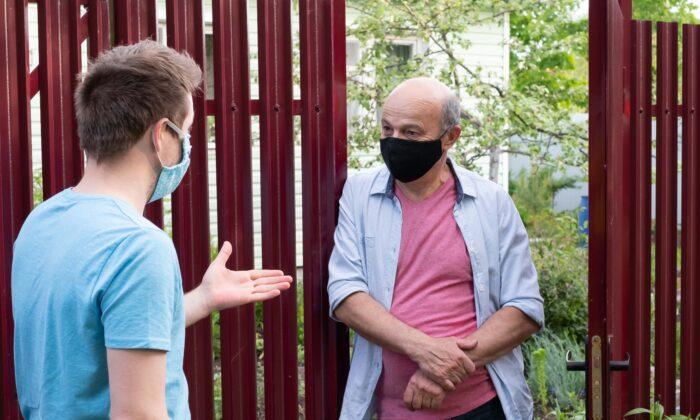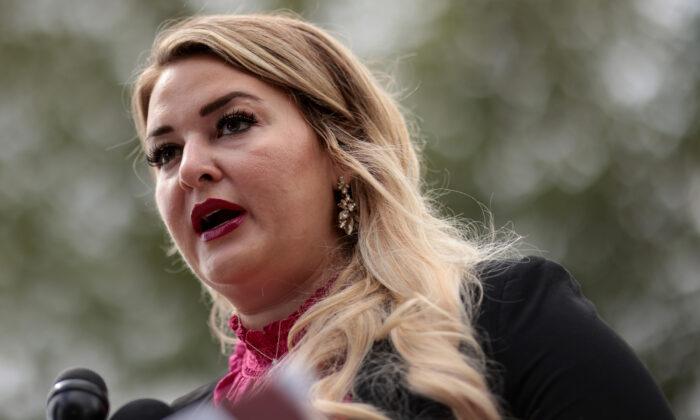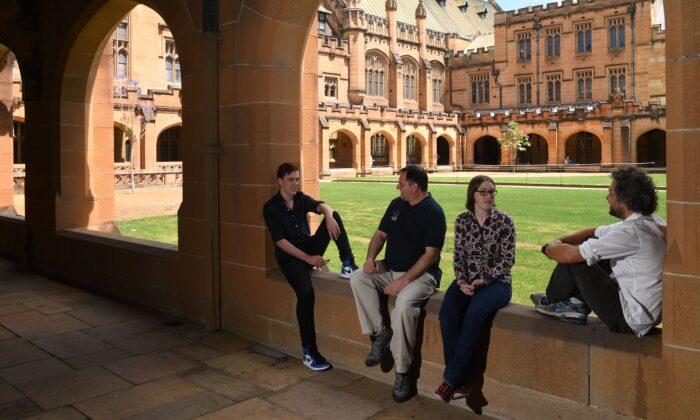The pandemic has changed basic social interactions in ways that affect our personal and professional lives.
Not long ago, I was at my son’s baseball practice, which had just resumed as social distancing guidelines relaxed. It was my first time meeting my son’s new coach—let’s call him Coach Joe—in person. I was introduced to him while standing 12 feet apart, and I nodded at him and said, “Hey, what’s going on, Joe?”
I pride myself on being a connection coach, but in this moment, I hesitated, and it was so awkward for both of us. We eventually got into a conversation, but it was definitely a missed opportunity. In the car, after replaying the interaction in my head a few times, I told my wife I had to get clear on how to engage people in this new circumstance. Humans seek meaning, they’re emotional and social. To best navigate the situation we are in, and focus on human connection, we’ve got to get clear on the mindset that’s going to get us through this.
Even as social distancing requirements are lifted or lessened, the world is not going to be like it was. The individuals, teams, and groups that thrive as the dust clears will be those who master the mindset of connection. But connection is not going to be as easy as it was before the pandemic. In the situation with Coach Joe, I fumbled because I had not thought through how I felt about engagement. So how can we overcome our aversions to human connection, both individually and as a business, and develop a dynamic mindset that will allow us to make and maintain relationships in a socially-distant society?
Start by asking yourself a few key questions. After the last few months of the pandemic, how do you feel about human connection? How do you feel about human connection knowing that you will encounter people—possibly COVID-19 positive—on the street, among your friends, or within your business interactions?
Think from the macro to micro. How do you feel about remote engagements versus in person? Looking at the goals of my company, most events and clients that we work with have been canceled through 2020. How do I feel about those events? Am I going to push for remote sessions, or am I going to assume risk and do in-person training? Many of the big, Fortune 100 companies have already put their flag in the sand, but that doesn’t mean you have to follow suit. If you’re a business owner, you have to make your own decisions on that, within the guidelines set forth by the companies you engage with and local, state, and federal governments.
Let’s look at interpersonal engagement. Where does risk exist and how are you going to assume it? For example, I work with a lot of clients who do tabletop sales events. Now they’re sitting in masks six feet from their masked customer. How does that work? We have to break down engagement, whether it is personal or business, and look at the main parts of it. There’s the introduction: when you first meet someone. There’s the direct engagement: the discussion. Then there’s the close: how do you part ways?
These are entrenched social activities that have been around for thousands of years, and a few months of social distancing can’t obliterate that; it just puts them into question. If it looks like you don’t trust yourself, like I did with Coach Joe, then it’s hard for people to trust you. We’ve got to think through our engagements and ‘take the issue away’ as Stuart Diamond says in his book, “Getting More.” If I’m in a mask, I might say something like, “I can’t wait until we don’t have to wear these things anymore.” When we get deeper in the discussion and are six feet apart, maybe I can ask if the other person wants to remove their masks. We’ve got to address the barriers in order to take the issue away.
In the current climate, we need to develop a mindset around risk and how we’re going to engage with people in different situations. Do I shake the person’s hand or not? How am I going to show up? How am I going to engage in the discussion? Am I going to stay six feet apart? Am I going to wear my mask or face shield? How am I going to say goodbye? Think through how you’re going to assume risk. The more clarity you can get on that, the more you can communicate in the moment, which takes the issue away.
Finally, with everything changing so fast, you should reevaluate how you’re assuming risk and how you feel about engaging with people on a day-to-day and week-to-week basis. We have to pay attention, reassess how we’re going to overcome our aversions to people, and communicate our approach to the people relevant in our lives.
Until then, remember that fear is contagious, but so is leadership. I'll see you on the Rooftop.






